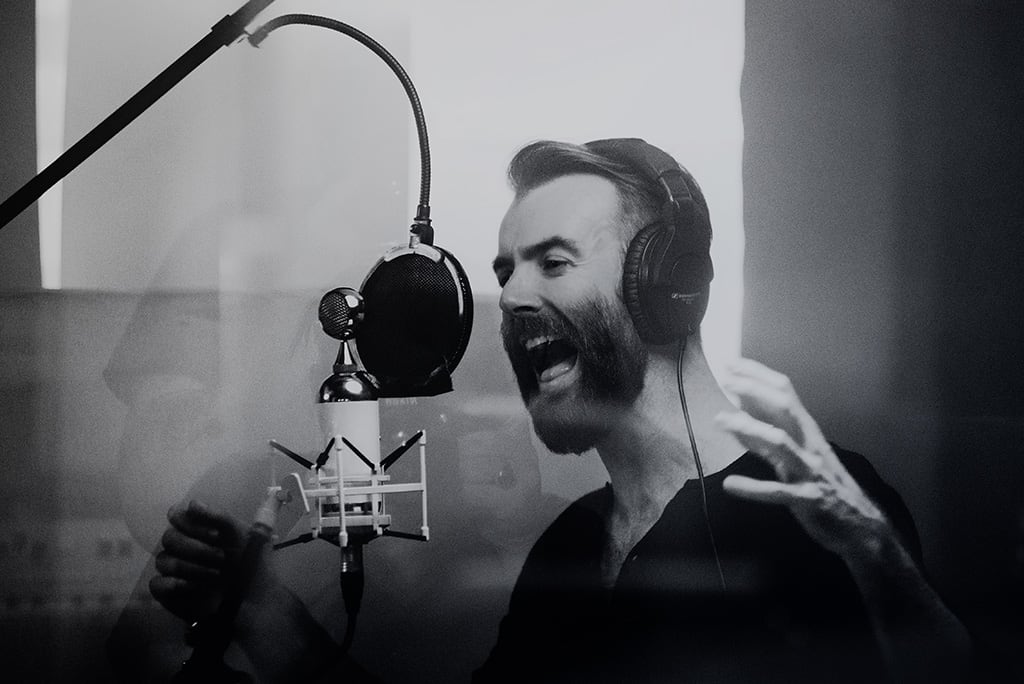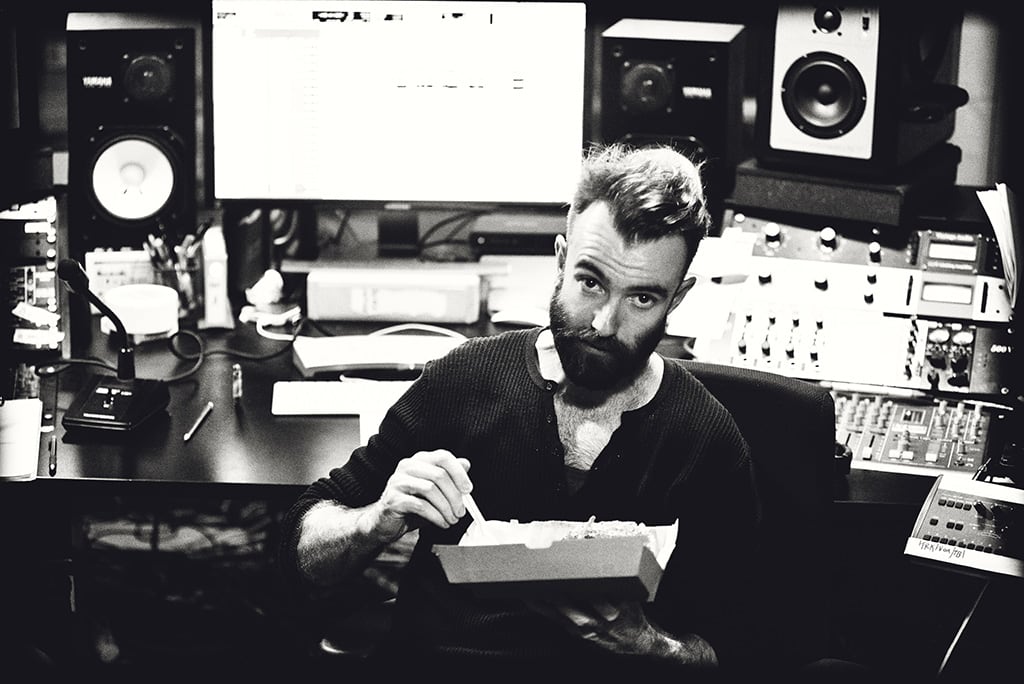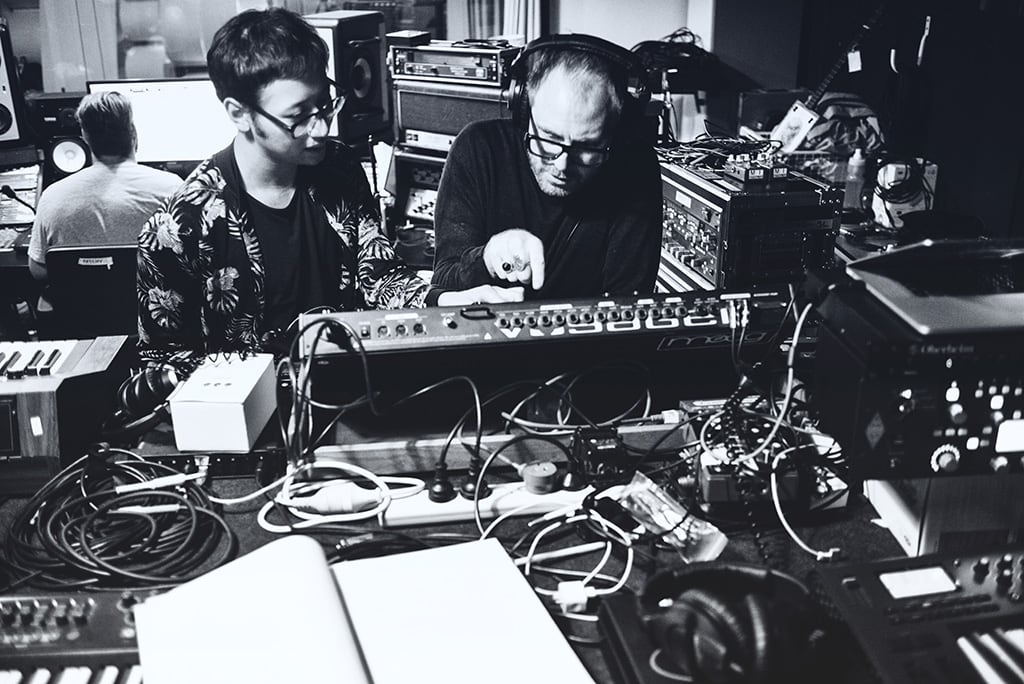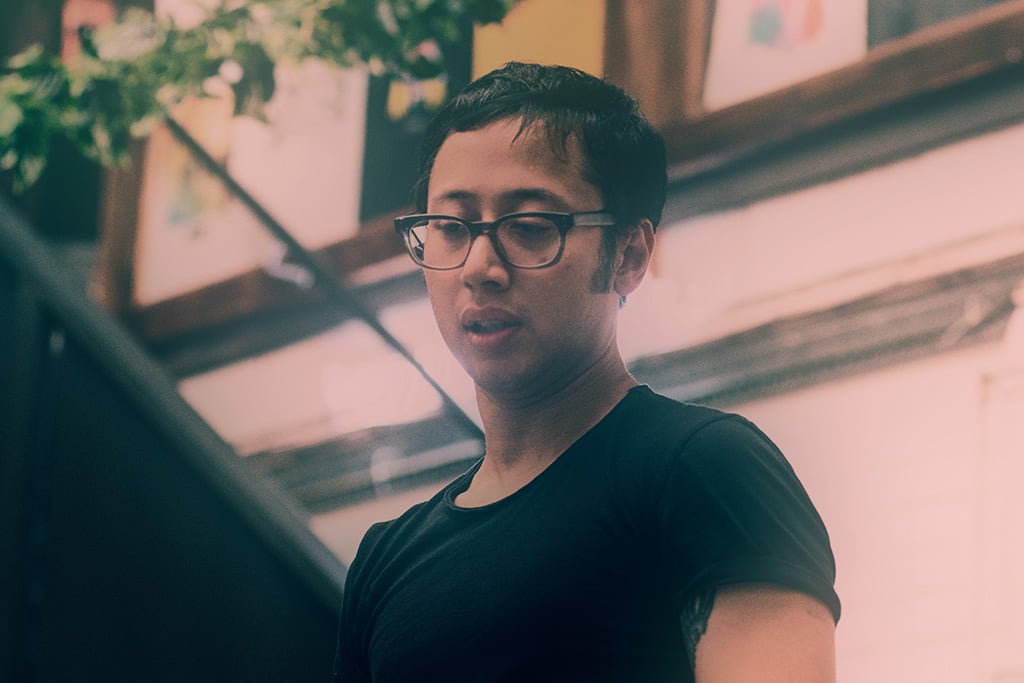
Brace Yourself
Tool producer Dave Bottrill helped Birds of Tokyo turn a heavy leaf by stripping back. Aside from their Squarewave Karate-Time Guitar Sound, that is!

Artist: Birds of Tokyo
Album: Brace
It was the day after the final US Presidential debate, almost three weeks before Trump came home for the upset win — upsetting half the US population, overconfident polling pundits, and liberals everywhere. Birds of Tokyo singer Ian Kenny was agitated and bored by the payoff after such a momentous build up. “In a way, who cares? But of course you care,” he said. “How often do you want to be part of the circus?”
That sentiment flows through the band’s latest album, Brace. On one hand, you want to detach from the political circus, but on the other, there’s a responsibility to engage. The album seems uncharacteristically heavy — musically and lyrically. Whether Kenny’s calling for revolt, predicting destruction, or warning about the outcomes of selfish desire, his bandmates are laying down an equally crushing soundtrack. “That weight of music has always been in our bones and language when we talk about songs,” said Kenny. Indeed, after re-reading the lyrics for the band’s biggest commercial pop hit, Lanterns, it’s right there for anyone to see. Though the call for an uprising feels more like a subtext cloaked by the anthem’s natural uplift. “It feels like we got it across the whole record this time,” said Kenny. “We push the production side to emphasise what the band is at the time. This time round we thought, ‘F**k, this carries a different weight.’ We want to point the finger at a few things; hold some people accountable, and ourselves accountable as well.”
Birds had always seemed like the light-hearted outlet for Kenny, who’s other band, the prog-rocking Karnivool, has never been afraid to work in darker shades. But talking to Kenny, the two have always had mutually exclusive creative paths and after almost a decade together this was just Birds’ time to get heavy.
“I don’t think we could have stopped it to be honest,” continued Kenny. “It was one direction and one direction only for this record. I mean, what the f**k? Adam [Sparks, guitarist]’s actually playing a tap solo, dual solos on some of the bits, and does a blinder in Harlequins. I was so pumped, he never really breaks out and creates space where it’s purely him exposed on his instrument. He’s done that on this record and nailed it. It’s so metal.”
BUILDING THE BIRD CAGE
Birds have developed a writing and pre-production system that’s become habitual, but is designed to get them out of a routine. For every album the band rents a new space to write and do pre-production in. Sometimes it’s a studio, but more likely a house or terrace apartment loosely converted into a temporary studio. A layer of acoustic treatment goes up, holes are punched through walls to run cables between rooms and the band’s collection of recording equipment and instruments is installed. It’s about the fourth time the band has gone through the process, so they’re all comfortable rolling up their sleeves and getting the plaster saws out. In fact, when I was talking to Kenny, they were in the throes of patching up plaster and slapping a coat of bond paint back on their latest pair of townhouses on Parramatta Road in Annandale. “I’m pretty sure it was stuck between two brothels,” reckoned Kenny. “It’s an okay area, but it’s not great. We gut the house without knocking down the walls. Then move a whole bunch of gear in, soundproof it, and set it up so we can write the bulk of the record there. We’re just getting rid of it now the record’s done. With touring coming up, we don’t actually need the studio. When we come to make the next record, we’ll get another place.”
When I asked Kenny why they don’t just lock in a lease for a permanent space, he explained: “It’s not the space at all. It’s making a record there, investing in the writing, investing your time, the emotional connection to it all. By the time we’ve made the record, we’ve really chewed up the space. We welcome a fresh space each time we go in to make a record.”
When it comes to engineering during pre-production Birds have some in-house talent. Sparks — who had some production credits on their previous album, March Fires — provides the bulk of the gear and know-how. He’s been a student of audio engineering since starting an SAE course in 1997, dropping out of uni courses after that, then starting another music and production course at WAPA in 2003. At the end of his student life, Sparks “started working illegally out of the studio there,” he said. “That became my full time job. I was recording and producing metal and prog bands in Perth, even though I’ve never been a metal and prog guy.” Though he did grow up listening to Soundgarden, Smashing Pumpkins and a lot of early Nine Inch Nails, so he was well acquainted with heavy music. “Then I ran my own little place in Perth up until around 2008 when Birds started taking off.”
Sparks explained that the terrace house setup is broken up into a main room — which housed all the synths, Neve and API preamps, a Womog Audio 1176 clone, some JLM pres borrowed from assistant engineer Nathan Sheedy, Barefoot monitors and the Pro Tools HD rig — and a secondary writing room. While the bulk of the record was tracked at Studios 301 and Jungle Studios in Leichhardt, the band likes to keep recording quality high from the early writing stage, in case those parts make it onto the album. “It doesn’t really make sense for us to print everything then redo it when we go to another studio,” explained Sparks. “We like to have our own environment where the sessions are constantly open and tweakable until the very last minute when we have to print and send the mix in.” Often it would be the happy accidents they would keep, whether sound design elements, a Moog patch or guitar configuration they couldn’t quite reproduce at the tracking stage.

HEAVY PRODUCER LOAD
Birds went looking for a producer who could help them carry the heavy load and shortlisted Dave Bottrill, who has produced Tool, Dream Theatre and King Crimson; and had some hand in half the albums they brought in as references. It was a no brainer, but the band still got on Skype well before pre-production to make sure they’d get along before they flew him over for three months. “Man you could find yourself three weeks into a situation where you’ve flown a producer in and it’s just not right,” said Kenny. Thankfully, their hunched played out. “We knew that if we could get access to this guy, we might be able to achieve the results we’re after. We totally got it, then some more. Dave really pushed the performance side of things, drilling whoever needed it to get the right part at the right time. He was fairly relentless,” and Kenny says he was all for Sparks ripping on the guitar. “Not because Dave’s made heavy records, but because he knew this was a new welcome space for the band. He wanted to do it well and expose new parts of what the band can do.”
Bottrill embraced the Skype back and forth to help bridge the divide between Toronto and Sydney. It’s difficult to fit six to nine months of international travel into the schedule and budget, he stayed in touch for most of pre-production then came out for roughly three months. During pre-production he wanted to make sure the record was as “tight and taut” as it could be, making recordings of the progress to refine the lyrics and song structures. “I find it very exciting when bands step out of their comfort zone,” he said. “The whole band wanted to push their level of writing to inspiring new peaks. I brought a level of experience from doing more heavy music; a way to mic guitars and record things in a way that keeps the heaviness of it. The exciting challenge for me was to keep it heavy but feature Ian’s great melodies at the same time.”
We push the production side to emphasise what the band is at the time. This time round we thought, ‘F**k, this carries a different weight

At Studios 301 in Sydney, “we did all the drums, most of the bass, some guitar and some key parts together,” said Kenny. “Then we built the rest of the record around that at Jungle, including the vocals.”
While Sparks noticed Bottrill was happy to let 301 engineer Simon Todkill get on with his job, it was still very much under Bottrill’s direction. “I like to make sure the bottom end is solid in the rhythm section before I start overdubbing any part of it,” said Bottrill. “There’s nothing worse than building on a weak foundation.

“When I go into a studio to record drums, I try to make sure the drummer knows how the part goes, and how it’s played. I think musicians really want to push themselves to be the best they can be, and I always try to help them achieve that. For drums, I want every snare hit, every kick drum, every tom hit to be confidently hit. Not necessarily how heavy it is, but you’re making that hit with the dynamic and the conditioning you intend for it. Once that’s there, the energy remains.
“Once we’ve got the drums I try not to edit too much. I love to keep the performance from the musician and the spirit of humanity to be involved as much as possible.”
“It was surprising how little Dave would get anal about the bits and pieces,” noted Sparks. “A little sharp or flat doesn’t matter, just let it be natural and let the performance come through.”
Bottrill went on to detail how they captured the drums at the recently closed down Alexandria version of Studios 301. “The drum room at 301 was really good when you put the drums on the back wall, facing out to the big room with room mics if you want a really big sound,” he recalled. “I like to have at least three microphones on a kick drum; one inside, like an AKG D12, one outside, say a Neumman FET 47, and a sub-kick. I mic each tom-tom with one on the top, usually a Shure SM57, and one underneath, a Sennheiser MD421, out of phase, so I can get the resonance and full sound of the tom. Sometimes I put a cotton wool ball inside the tom and close the head down on top of it. It lifts up when you hit the drum but settles on the bottom head so it doesn’t resonate for too long and cloud the rest of the drum sound. Snare is usually an SM57 on top and bottom, and I’ll often use a Neumann U87 for room mics and have a couple of overhead cymbal mics.
“Simon and I would check the phase of each mic. With a close mic you check the phase in and out and move the mic back and forth two inches here and there. I often get a string or mic cable and measure how far each microphone is away from the snare drum, for example.”
Bottrill likes to make decisions at the tracking stage, blending the bottom and top mic of the toms and printing them together. However, while he might occasionally print the kick and snare blends, he kept his options open since it had been a while since he’d worked at 301. “I do like to make commitments,” he said. “For instance, I’d blend the mics on each of the guitar cabinets, but keep each cabinet separate.”

SQUAREWAVE KARATE-TIME GUITAR SOUND
The guitar mic and cabinet scheme Bottrill is referring to is one he and Sparks developed that they called the Supersound or Squarewave Karate-Time Guitar Sound! “It was basically a combination of nine mics all summed down,” explained Sparks. “We’d have a Diezel amp, a Marshall and this Morgan, which is an AC30-leaning amp without the stacky, tubey, weird glassiness, made by a boutique guy in Orange County. Then we’d have three mics on each cab — like a Shure SM57, a Sennheiser MD421 and a Royer 121. They’d all go through my rack of Neve and API preamps, and we’d find a blend we’d like out of all the combinations and sum it down in Pro Tools.
“The Diezel would have a certain type of low-end and high-gain, whereas the 800 was more mid-range, and the Morgan was really classic clean. Sometimes it’d be a blend of all three, which was the Supersound. We didn’t want to have options when it came time to mix. Once we got it going, we didn’t EQ anything going in, Dave would just find his balance of the three and that would be the guitar sound.”

“We start by getting the best guitar sound we can and then tailor it to each part,” continued Bottrill. “That way when you’re at the end of the record, it doesn’t just sound like the same lead guitar all the way through the record. It will also change with the key you’re playing in or the part you’re playing. You’ve got to make sure the part you’re playing is supported by the sound. Each of the rhythm tracks on the album have subtle differences in their sound.
“I try not to compress too much because I’d rather have the player play the part as evenly as they can. But I do like 2-3dB of compression to take the edge off and even it out a little bit. I’d EQ a little bit of bite into the top end after the compressor too.”
“Similar to the guitars, we used two amps for the bass; an Ampeg SVT for the big bottom end and a smaller amp for the grit and distortion. He also used a few pedals along the way to add a little bit of edge so it bites through again and blends in with the guitars.”

STRIPPING BACK
Despite the elaborate Squarewave Karate-Time Guitar Sound setup, the band actually kept to a strict diet of core instruments. “It was more about stripping back,” explained Kenny. “Adam’s got dozens of guitars and Glenn’s got a dozen synths. We’ve actually built an arsenal in our studio, but Bernie gave himself two bass guitars to use for the record, Adam gave himself four guitars, Westy stuck to the one kit for most of the record and made a hybrid kit just to flesh out a few parts, and Glenn stuck to a very minimalistic approach to the keys. Even Bernie’s pedalboard now is basically two pedals and a channel switch. It’s the same with Adam, just really basic from the floor up.”
Sparks said the actual number of guitars he ended up pulling out of his quiver was just two for the whole record: “Dave wouldn’t really let us edit anything; he didn’t want to do all different guitar voices. It was about picking a left channel guitar and a right channel guitar, do one take for each side, play it again, play it again, there you go, that’s your sound.”
Similarly, Glenn’s keyboard setup was primarily a choice between a Yamaha SK-20, Moog and DSI OB-6 synth. “We ran it all through a Pi-Phase, which is a little Mutron Bi-Phase replica pedal and two Fulltone OCD guitar pedals,” said Sparks. “We’d get this sweeping wide, late ‘70s psych sound out of it. We didn’t EQ much, but we ran that through a pair of old API 550s to shape how much midrange we wanted in the keyboard sound.
“The core of a lot of what you hear in the record is one of Bernie’s P-Basses through an Ampeg, the Moog through OCD pedals, an ESP guitar to the left and a Fender with Bareknuckle pickups on the right. That’s pretty much it and Dave managed to make it sound so much more than that.”

Kenny’s a man on a mission when it comes to vocal takes. His Karnivool band mates were always impressed by his ability to nail the take, and he takes a similar approach to the Birds material. “I understand what it means to record and I enjoy getting things down,” he said. “I don’t like wasting my time or other people’s time in there. I want to get in there, nail it and move on. I like perpetual motion, so I try and work my hardest to keep that going.”
To keep things humming along, Bottrill and Sparks landed on one vocal mic early on. “I bought this Russian mic — a Soyuz SU017,” said Sparks. “I also had a Bock 241 that we really liked for Kenny, but when we put the Soyuz up without any processing, Dave said, ‘There’s your vocal sound.’ The vocal chain was that into a Chandler LTD pre/EQ then my Tube-Tech CL1B compressor.”

BOTTOM UP MIX APPROACH
These days Bottrill mixes in his Canadian studio, where he works in-the-box. “I’ve got every Waves, UAD, McDSP, Soundtoys plug-in on a very powerful system,” described Bottrill. “It’s so much easier to go between songs, especially when mixing remotely for people in other countries. I can send mixes to people then run through another song. With a console I’d be stuck for days waiting for feedback.
“In this day and age I see no loss in quality. I like to think how I use the equipment has a unique quality to it. I have excellent quality converters, an excellent quality computer system, and I know how to operate it. It took me a long time to get familiar with in-the-box but I did a lot of referencing and A/B testing and found that for the most part it really wasn’t a problem not running things out to a console for summing.”

Bottrill says when he pulls up a session it might have 2-300 tracks to work through. It can’t just be a matter of throwing it up on the board and balancing, there has to be a lot of carving out involved. He usually starts by figuring out the bottom end that fits the record and working from there. “When I’ve got that right I can fit the guitars and vocals in around that. If I try and build it from the top, I lose my way. I’ll usually pull up the rhythm section then the vocals, because those are the foundation.
“I’ll generally high-pass guitars but only at 20Hz to start with and then if it needs more I will. It’s really dependent on the part. If it’s up high then I can knock off a lot. But if it’s a low, chuggy part, you want that air moving and to feel the energy at the bottom end when they’re palm-muting.

“With Birds and other heavy acts I’ll tend to add samples to the drums. However, I won’t use those samples necessarily to replace sounds, but I’ll use them to open gates. There’ll be a gate across the snare or toms, but they’ll be triggered off a totally clean sample. That way I can set the threshold level and how far the gate goes down too. It doesn’t actually turn it right off, but just lowers it down. So you still have the feeling of live drums but you’re not getting a lot of the bleed and the rest of the drums on tom mics.
“If I get to the mix point and I need a little bit more bottom or a little bit more attack on my tom, then I’ll use that sound to fulfil that role. But I never use it as a replacement, I’ll use it as a supplement.”
It’s very much de rigueur to add harmonic distortion to tracks in a mix, but Bottrill prefers to keep things clean. “I don’t tend to use much distortion to blend things,” he said. “I work very hard to balance the mixes so that things are working together. I’ll use some great simulated analogue compressors to gel everything together, but I’ll only ever limit very gently.”

SENSE OF SIZE
Kenny says they would do another record with Bottrill in a heartbeat, if it was the right musical fit. Far from a hard-edged heavy metal producer, Kenny described him as “a sweet Canadian dude, really well-versed in the best way to approach records and handle people. Dave’s best role was knowing where to pull back and keep things in reserve. Sometimes you can overload the textural dressing and make it a bit too thick, which can constrict certain songs. He was very aware and attentive of when to leave space.”
“What we learned most from him was just to play well and be a band,” said Sparks. “We talked a lot about not editing anything other than comping drums. If you grid everything up and it all falls on the beat, you’re going to sound small. Not editing has a natural push and pull, and it forces you to try to play really well. We got the sense of size from the blend of the two guitar channels, the Moog and the bass. It took a while to dial that balance in, but once we got it, that became a bedrock for everything around it. The more we added to it, the smaller it started to sound.”
















RESPONSES